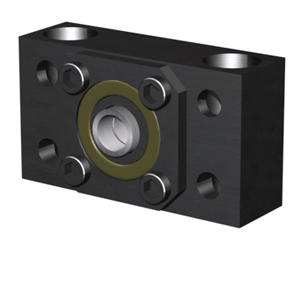Design World’s always excellent Danielle Collins posted a great article about how Design Engineers can achieve both high speed and long travel with Ball Screws.
Didn’t know you could do that, did you?
Traditional solutions involve Belt Drives, Rack and Pinion Systems or Linear Motors. But each of those come with their own set of drawbacks. Ball Screws are an ideal solution for applications that are sensitive to thrust force or positioning accuracy
Yet Ball Screws are rarely looked at for high speed/long travel applications. Why?
Critical Speed
Any long cylindrical object will naturally sag in the middle. Add rotation, and you will get a whip effect, similar to a jump rope. The speed of rotation where that effect starts is the Critical Speed.
Obviously, one way to limit this effect would be to have a shorter unsupported span. But how do you limit the effect if your application calls for a long travel span?
The Solution – Ball Screw Supports
 Some customers have made their own ball screw supports, usually paired on either side of the ball nut in pairs of 2, 4 or 6, to reduce the unsupported distance, essentially quadrupling the critical speed for each pair used. Depending on the application, they can even allow you to select a smaller diameter ball screw, without compromising performance.
Some customers have made their own ball screw supports, usually paired on either side of the ball nut in pairs of 2, 4 or 6, to reduce the unsupported distance, essentially quadrupling the critical speed for each pair used. Depending on the application, they can even allow you to select a smaller diameter ball screw, without compromising performance.
So, have you used this solution? Or do you have an application where it might be a suitable alternative?

